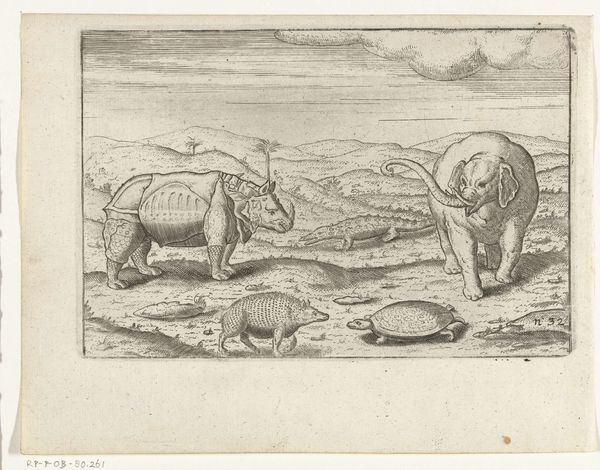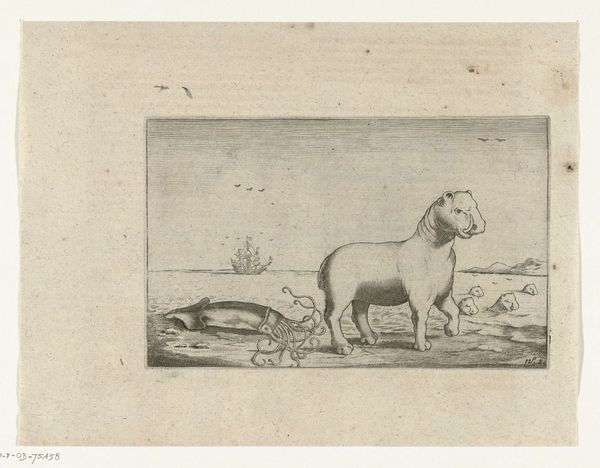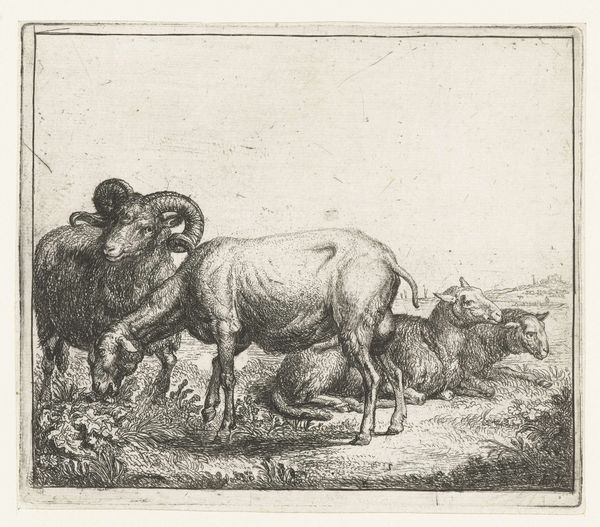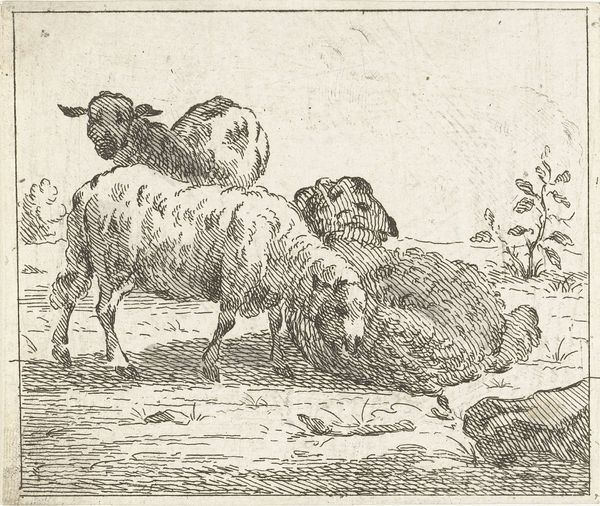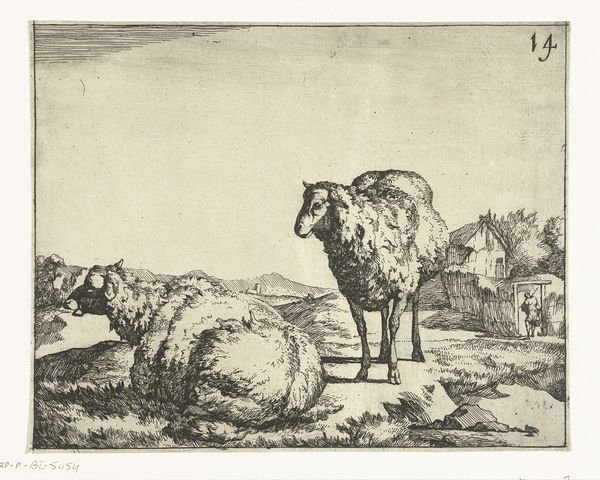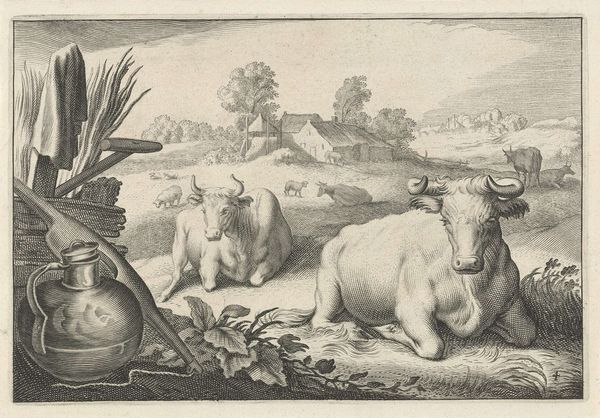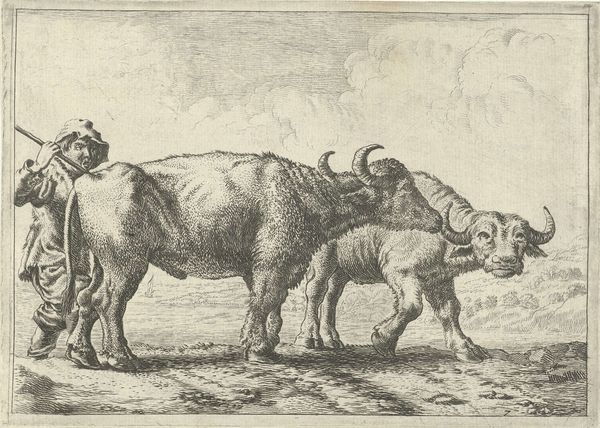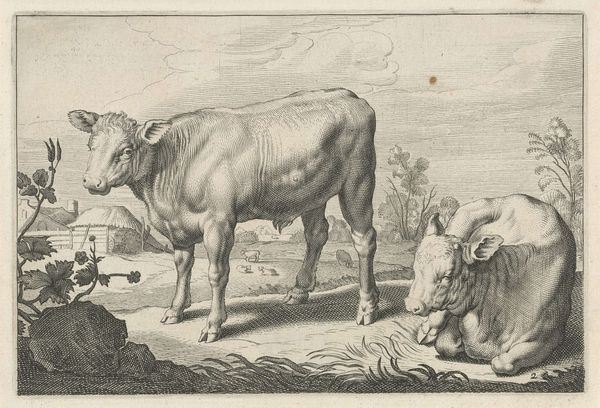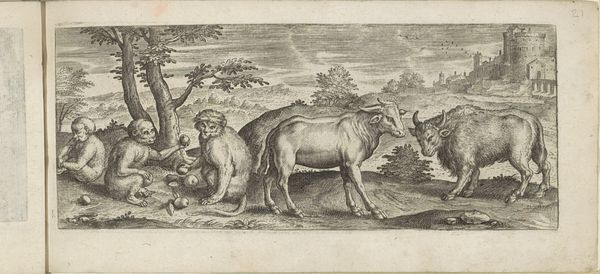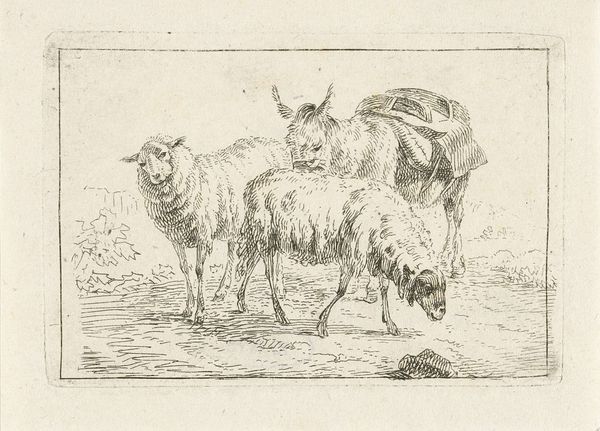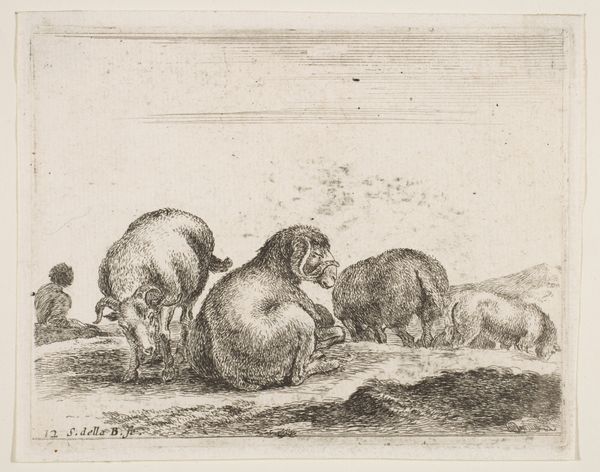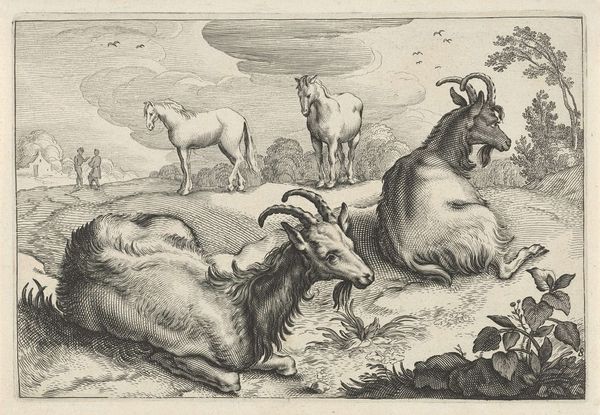
Verschillende lokale diersoorten, waaronder een dodo, 1624 1632 - 1646
0:00
0:00
adriaenmatham
Rijksmuseum
print, engraving
#
dutch-golden-age
# print
#
old engraving style
#
engraving
Dimensions: height 105 mm, width 170 mm
Copyright: Rijks Museum: Open Domain
Editor: This print, created sometime between 1632 and 1646 by Adriaen Matham and titled "Verschillende lokale diersoorten, waaronder een dodo," or "Different local animal species, including a dodo," depicts three animals: a dodo, a ram, and what seems to be a curlew. It’s rendered in an old engraving style, with delicate lines. I’m struck by the unlikely pairing of these creatures. What strikes you about this image? Curator: Well, given my Materialist lens, what stands out is the process of its creation and the social context around it. Engravings like this were a primary means of disseminating information – and misinformation – about the natural world at this time. We need to consider Matham's labor in producing this image. Consider the market forces at play: what kind of patron or audience would commission or buy a print like this? Editor: That’s interesting. I hadn’t really thought about the economics behind it. So, is the selection of these specific animals—especially the dodo, an exotic bird—linked to their potential monetary value? Curator: Precisely. The dodo, newly extinct, becomes a commodity in image form. Think about the materiality of the engraving itself. The ink, the paper, and the printing process transformed images of rare animals into portable items, feeding European desire for possessing images representing control over global resources. Were these animals regarded differently by European audiences as images compared to when alive? Editor: That’s a great question! Perhaps this distance created by the medium makes them easier to collect and display—at least symbolically. I hadn’t considered the link between artistic media and consumption in that way before. Curator: Exactly! By focusing on the material process of making the art, including all stages, we expose dynamics that inform culture, and our interactions and material relationships with animals. Editor: It has changed my whole outlook and understanding. I will never think of images depicting animals as something cute to passively consume, but with active and exploitive connections.
Comments
No comments
Be the first to comment and join the conversation on the ultimate creative platform.
